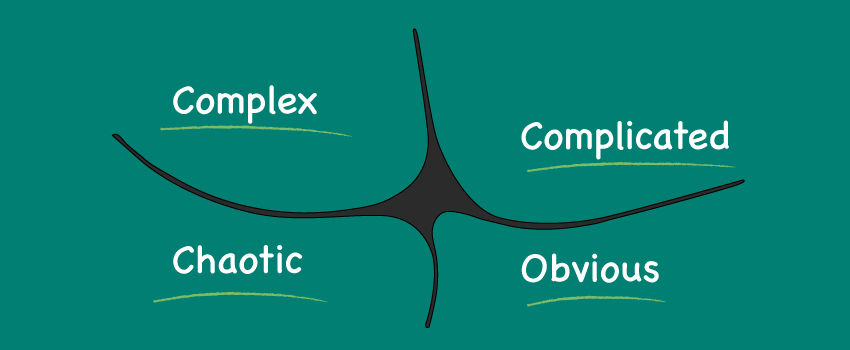Being an Agile Coach – Dealing with Conflict

The word “conflict” tends to stir up emotions in corporate America. Few companies want to find themselves in conflict. Most employees will view conflict as a bad thing and something to be avoided at all costs. But some conflict can actually be healthy. The reality is that disagreements do not have to turn into fights. We can keep our differences in check if we have a few basic understandings regarding conflict. Conflict occurs when two or more people with mutually exclusive viewpoints attempt to solve a problem.
Two kinds of Conflict (healthy and unhealthy)
Conflict is unhealthy when it negatively impacts the company or team by hindering or limiting their ability to do productive work.
Conflict is healthy when the opposite occurs. When conflict is viewed and handled appropriately.
We know conflict is unhealthy when:
- People no longer calculate their remarks to edify or change others. Instead, they plan their remarks (often unconsciously) to hurt, demean, defame, or even destroy another
- People begin to question whether their relationships can weather the storm of difference
- People feel rejected by those who were once considered friends
- People feel they have no control and the odds are against them
- The pain of the competition is greater than the exhilaration of the challenge
- People make accusations, and it seems that “others” want to destroy or split relationships down the middle.
- People use words that have violent connotations
Conflict is healthy when:
- The people involved feel confident they can manage the differences
- Those involved adhere to firmly to decision-making processes authorized by the team and working agreements of the company
- People operate within the specifically stated, generally understood rules of appropriate behavior in the company
- People cooperate in the process suggested by the leadership
Reactions to conflict
- Conflict is wrong.
Some individuals believe that conflict is always wrong. The mindset is that people in a copmany should be in agreement and live in harmony. They become nervous when team members express differences of opinion. They “lovingly” try to encourage people into one opinion. The attitude does not acknowledge that legitimate differences can exist among different people.
- Conflict is an opportunity to exercise power.
Some people view any discussion as debate and any issue as a time to win at any cost. These people get their thrills in the competition of the moment. Winning the issue is oftentimes far more important than the issue itself.
- Apathy (this doesn’t involve me)
Some people do not care much about the outcome of the issues involved. The apathetic spirit comes from several sources including burnout, fatigue, stress, a defeated spirit, or a different set of priorities.
- Personal affect (this does involve me)
Some people do have a considerable stake in the outcome. These often include the leader, staff, board members, managers, and other directly involved individuals. People often believe that the outcome will affect their reputation and/or their feelings of self-worth. Oftentimes the emotional involvement clouds an individual’s reasoning and judgment surrounding an issue.
- Conflict might split a company
Some people become nervous when any disagreement occurs in a company or team because they believe it will divide the team needlessly. These individuals many have vulnerable feelings left from past conflict that was handled in a hurtful way. Whatever the reason, they tend to sweep all controversial issues under the rug and hope they go away. They would rather stay in a bad situation than risk the unknown.
Responses to Conflict
- Deny it
- Ignore it
- Confront it
Sources of friction
Understanding the causes of friction can be of tremendous value.
- Stress can trigger friction – minor issues can become major when stress is a factor. Check the pulse of your team before you consider a major issue.
- Confusion or ignorance about an issue creates friction – The questions people ask can often seem negative or confrontational. Less confusions exists when leadership provides clear provides clear information about goals, actions, priorities, and proposals
- Improper use of power – The top reason for forced terminations of managers involves this question: “Who is going to control this team?” When different parties vie for power, a fight looms on the horizon. Selfish attempts for power and control can lead to chaos in the management ranks.
- Change often leads to friction – Companies cannot grow if they do not change. Change will not occur without some conflict. Be alert in times of change because change involves movement, and movement creates friction
- Different gifts of team members can create friction – Some gifts can be perceived as mutually exclusive. Just because one person is awesome at one thing… doesn’t mean they control that functional role.
Solutions to Conflict
Approaches to conflict can create one of three results: win-lose; lose-lose; or win-win.
- A win-lose result occurs when parties create aggressive confrontation by pushing to establish their individual viewpoints. Sometimes this is the only way to solve some problems. This approach can lead to unhealthy results unless the people involved approach the issues with a redemptive attitude of reconciliation.
- In a lose-lose situation, parties reach a compromise, but everyone involved in equally unhappy. Lose-lose can also sow the seeds on ongoing unrest with the members of teams and the company as a whole.
- Win-win solutions should be the goal of every company experiencing conflict. One way to achieve a win-win solution is by negotiating. In negotiation the parties involved listen to the various positions and enter into a give and take so that a mutually acceptable solution evolves.
How the Agile coach works in this is to be a master mediator of conflict… as it arises. Your ability to manage oneself, be objective, and empathetic will be the testament of your character, professionalism, and integrity.





Responses